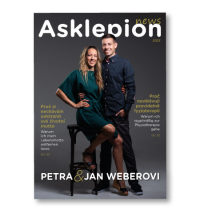client services manager
Please leave your contact information and we will get back to you right away.
We will schedule a time and tell you all about your treatment in detail.
Consult with a plastic surgeon online during video consultation.
Please leave your contact information and we will get back to you right away. We will schedule a time and tell you all about your treatment in detail.

Treatment of varicose veins by laser and radiofrequency
- Short convalescence
- Less bruising and pain compared to traditional methods
- Significantly better aesthetic effect
Laser or radiofrequency surgery of varicose veins is extremely gentle. It is done on an outpatient basis, under local anesthesia only. The doctor inserts an optical fiber into the affected vein through a small puncture. It is then closed through the effect of the heat of the laser or radiofrequency energy.

ALL ABOUT THE TREATMENT OF VARICOSE VEINS BY LASER AND RADIOFREQUENCY
INDICATION
The treatment is intended for patients with a wide range of ailments, from aesthetic defects, itching, cramps and swelling of the limbs, to advanced stages with pigmentation, chronic atrophy and inflammation of the subcutaneous tissue or healed varicose ulcers.
TREATMENT
After the operation, you usually do not have a single stitch, the surgical wounds are about 2-3 mm long. The closed vein remains in the body and changes within a few weeks in a ligamentous band. The smaller varices on the lateral vein branches become smaller.
RESULT
You go home after 1-2 hours after the operation. Patients describe significantly less pain and discomfort than in case of a conventional surgery. They go back to normal daily activities almost immediately.
COMPRESSION STOCKINGS
Compression stockings that affect the healing process are recommended after 3-6 weeks of surgery. They should only be taken off for a short period during hygiene.

Photo Gallery

Treatment of varicose veins by laser and radiofrequency - FAQ
What causes varicose veins?
Varicose veins are produced by increasing venous pressure in the superficial venous system as a result of backflow from deep veins through the non-closing venous valve, the so-called reflux. In layman's terms, the blood ceases to flow in one direction and returns. There is increased venous pressure in the superficial veins, and varices consequently arise. Both genetics and lifestyle - little movement, sedentary work, being overweight, hormonal contraception, smoking, and the number of pregnancies have an influence on whether or not varicose veins appear.
How is the initial examination by a vascular surgeon performed?
The basics include an interview and finding out what the difficulties are. With exaggeration, treatment occurs through merely a handshake. This is followed by a detailed ultrasonographic examination, where we look for the exact cause of the difficulties and the formation of varicose veins. Then we can tailor the appropriate treatment. At the same time, patients are interested in the expected success. We talk about possible complications and put together the realistically expected result. The procedure itself is predominantly outpatient, only under local anesthesia or, in the case of using glue on the veins, completely without anesthesia.





